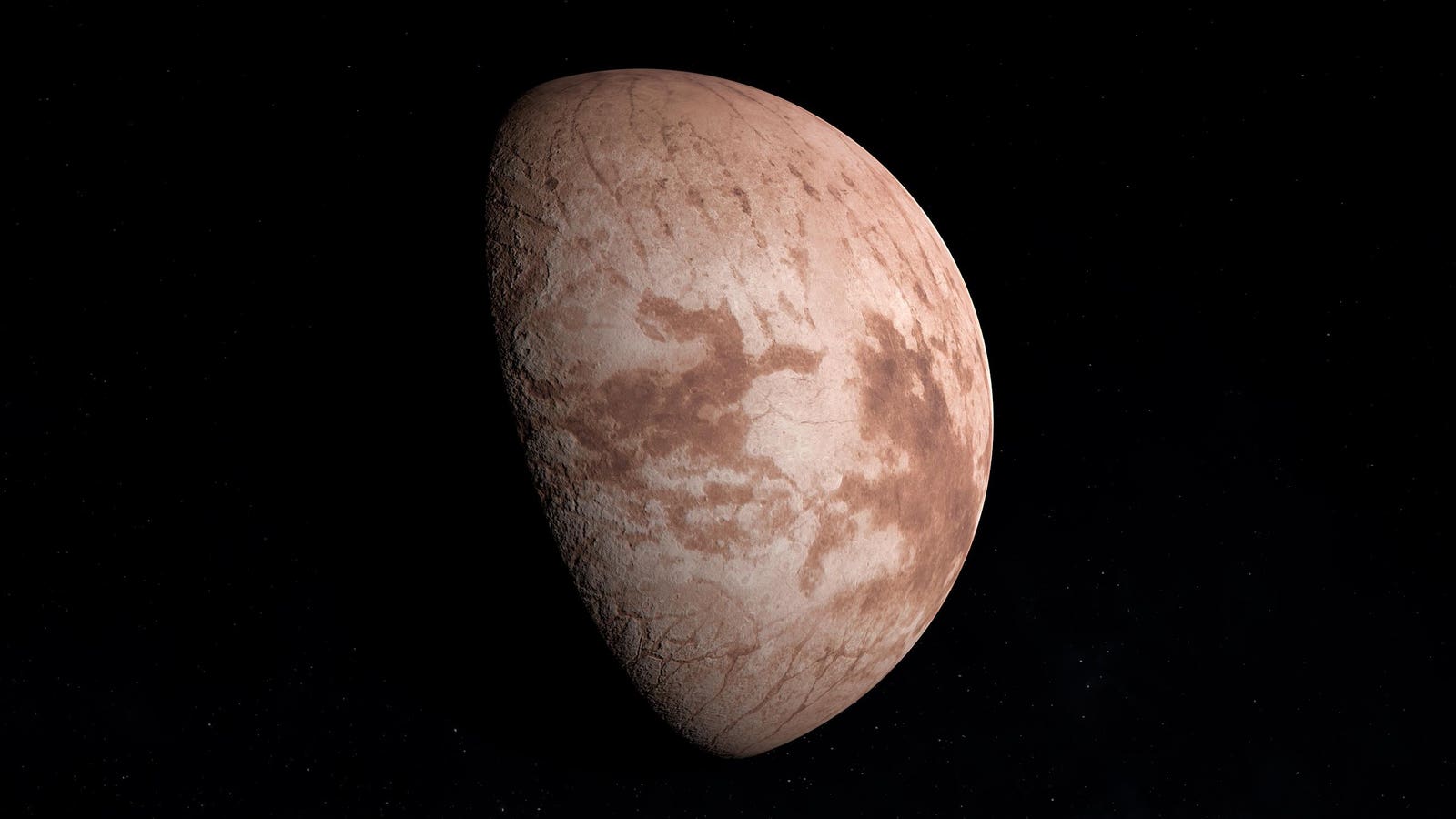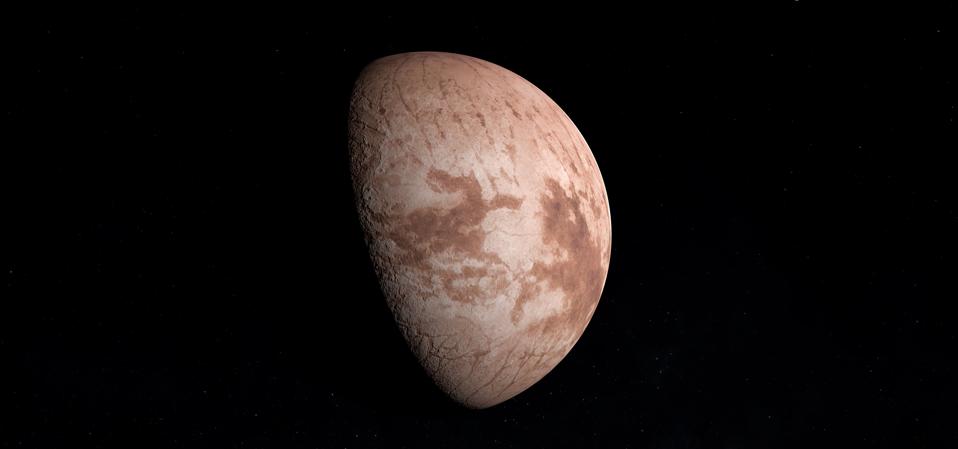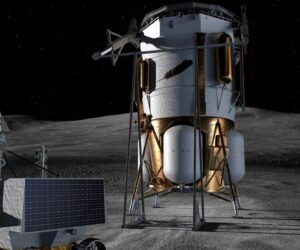Sedna orbiting near of Neptune planet. 3d render
The solar system suddenly has a new member. A new object discovered in the solar system beyond Neptune and Pluto has astronomers rethinking the history of the solar system. Called 2023 KQ14 and nicknamed “Ammonite,” the discovery of this unique so-called trans-Neptunian object is both unexpected and could reshape what we know about the solar system’s past.
Here’s everything you need to know about Ammonite, the solar system’s newly found object.
Is Ammonite A Planet Or A Dwarf Planet?
Ammonite is not classed as a planet. It’s not even called a dwarf planet, like Pluto (and Ceres, Haumea, Makemake and Eris). Ammonite is classed as a sednoid — an object similar to Sedna, a dwarf planet candidate in the outer solar system, which was found in 2003.
Like Sedna, Ammonite orbits beyond Neptune and has a highly eccentric orbit. Ammonite is only the fourth sednoid ever discovered (after Sedna, 2012 VP113 — nicknamed Biden — and Leleākūhonua).
How Big Is Ammonite?
Based solely on how much sunlight it reflects, Ammonite is thought to be between 137 and 236 miles (220 and 380 kilometers) in diameter, according to the paper announcing its discovery published this week in Nature Astronomy. That’s large, but significantly smaller than Pluto’s diameter of about 1,477 miles (2,377 kilometers) and Earth’s diameter of 7,926 miles (about 12,756 kilometers).
How Far Away Is Ammonite?
The solar system is measured in Earth-sun distances, one of which is called an astronomical unit (au). When it was found, Ammonite was 71 au from the sun. That’s about twice as far as Neptune (30 au) and Pluto (40 au). However, Ammonite’s orbital path is highly elliptical, getting as far from the sun as 432 au. It takes about 4,000 Earth-years to complete one orbit of the sun.
“Ammonite was found in a region far away where Neptune’s gravity has little influence,” said Dr. Fumi Yoshida of the University of Occupational and Environmental Health and the Chiba Institute of Technology, who leads the FOSSIL project that uncovered Ammonite. That implies that “something extraordinary occurred during the ancient era when Ammonite formed,” said Yoshida.
How Does Ammonite Affect The ‘Planet Nine’ Thesis?
The discovery appears to make the existence of a ninth planet less likely. There is an unusual clustering of six minor bodies in the outer solar system (including the sednoids). All appear to have hugely elongated and elliptical orbits, suggesting that they may have been “herded” by the gravitational influence of a planet.
However, Ammonite’s orbit is oriented in the opposite direction to the three other sednoids, breaking their orbital clustering — and, therefore, challenging the “Planet Nine” theory.
“The fact that Ammonite’s current orbit does not align with those of the other three sednoids lowers the likelihood of the Planet Nine hypothesis,” said Dr. Yukun Huang at the Center for Computational Astrophysics (CfCA) of NAOJ, who conducted simulations of Ammonite’s orbit. “It is possible that a planet once existed in the solar system but was later ejected, causing the unusual orbits we see today.”
The orbit of Ammonite (red line) and the orbits of the other three sednoids (white lines). Ammonite … More
Could ‘Planet Nine’ Still Exist After Ammonite’s Discovery?
The so-called “Planet Nine” could still exist, but much farther out in the solar system. It could also be a “ghost planet,” ejected long ago, with only its past gravitational influence remaining. The orbits of Ammonite and the other sednoids could also be explained by the gravitational influence of a star passing close to the solar system billions of years ago.
How Was Ammonite Found?
Ammonite was first observed using the Subaru Telescope’s wide-field prime-focus camera, Hyper Suprime-Cam (HSC), in March 2023 as part of the survey project FOSSIL (Formation of the Outer Solar System: An Icy Legacy). That also explains why it’s named after a fossil of a cephalopod. It was observed using Suburu again in May and August 2023.
The Canada-France-Hawaii Telescope’s MegaCam was used in July 2024 to trace its orbit more precisely. However, its orbit was calculated by finding it in archive images going back 19 years, including images from 2014 and 2021 from the DECam instrument in Chile and in 2005 images taken by Kitt Peak National Observatory.
This animation shows the observations of comet 3I/ATLAS when it was discovered on July 1, 2025. The … More
Why Is Ammonite Called A ‘Fossil’ Of The Solar System?
Ammonite’s status as a “fossil” of the early solar system comes from the finding that it’s at least 4.5 billion years old — almost as old as the solar system itself. Numerical simulations using NAOJ’s CfCA PC Cluster supercomputer indicate Ammonite’s orbit has remained stable for that time. It also revealed that around 4.2 billion years ago, the orbits of all the sednoids were very similar.
Ammonite is part of the fossil record of the orbital configuration of the early solar system. That helps astronomers understand what the solar system looked like when it first formed.
Why The Discovery Of Ammonite Is So Significant
The discovery of Ammonite goes far beyond merely adding one more distant object to the solar system’s population. “Ammonite’s orbit tells us that something sculpted the outer solar system very early on. Whether it was a passing star or a hidden planet, this discovery brings us closer to the truth,” said Dr. Shiang-Yu Wang, the study’s corresponding author and a Research Fellow in ASIAA.
“Spacecraft have only explored limited regions of the Solar System [and] most of the vast solar system remains unexplored,” said Yoshida. “Wide-field observations with the Subaru Telescope are steadily pushing back the frontier. “
Whether 2023 KQ14 is officially named Ammonite remains to be seen, with the International Astronomical Union set to assign a name at a later date.
Wishing you clear skies and wide eyes.









